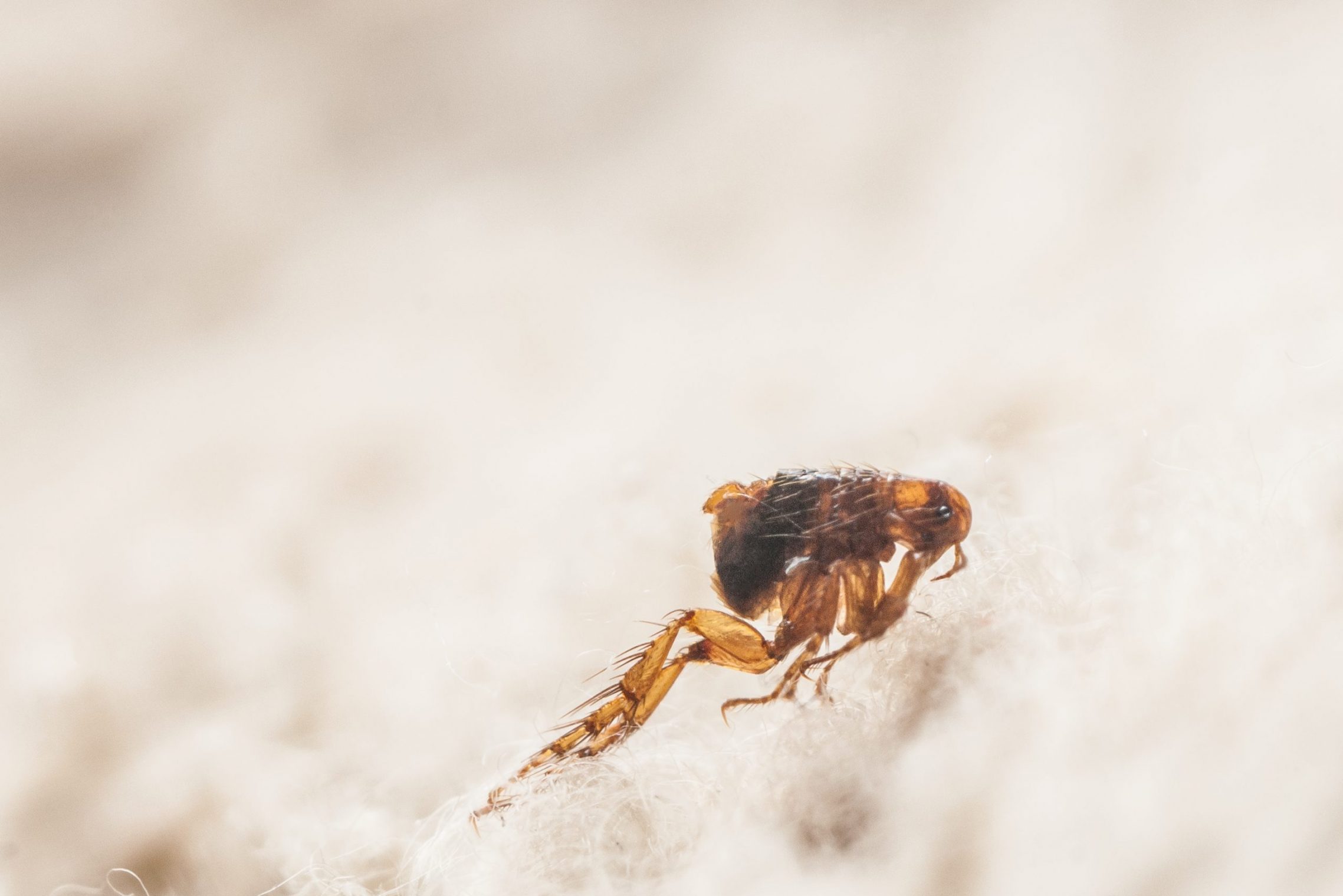
17 Jul Flea Infestation
How do I get rid of Fleas?
Flea infestations can happen a number of different ways, not all of which are completely controllable. Fleas are known to harbor numerous diseases and can be one of the more commonly encountered pests. The good news is flea infestations are manageable with a little diligence and prevention. The best way to deal with fleas is to never get them in the first place, but there are a few things you can do if they get into your home.
Prevention
Though rare, it is possible to get fleas without owning pets. Fleas typically need a host to travel into the home, but they can enter through screens and other cracks. This is more likely in heavily wooded areas where wildlife is more prevalent. Most pet owners can tell you that without some sort of flea treatment their pets WILL get fleas at some point. Lapses in flea treatment is the likely culprit for most infestations.
However, fleas have to go through a cocooning stage of their life before they grow into a full adult. If conditions aren’t ideal, temperature and moisture, the fleas can remain in this cocooned state for up to six months. Then when conditions are better, or a host is detected through heat and C02, the fleas can spring to life once more. This is how seemingly abandoned buildings can maintain flea infestations when nothing has come or go for months!
Removal
Once fleas are in a building they’re incredibly difficult to fully remove. It requires diligence, patience, and a whole lot of vacuuming. Fleas are attracted to two things: heat and C02. Some home methods for removal involve easy-to-find items like dish soap and a tea candle. The idea is to float a tea candle in a bowl of soapy water to try and tempt the fleas into jumping to the heat source. These homemade flea traps have wildly varying degrees of success.
There are numerous sprays and advertised natural and chemical flea killers out there. Diatomaceous earth is a cheap and relatively safe option. The hard part isn’t killing the fleas, it’s removing the eggs before another generation hatches. By the time you know you have fleas, when you first notice that itch, there are likely eggs laid somewhere else in the house already.
Fleas can start laying eggs within 24 hours of being hatched. Those eggs can remain unhatched for up to two weeks. So it can be easy to think you’ve gotten rid of them when in reality there’s an even bigger batch right around the corner. That’s where the vacuuming comes in. Wash everything you can in warm water and vacuum the rest. Alternatively, you can put an item in a plastic bag and place it in the freezer for at least five days.
If you’ve been putting up the good fight and not seeing results, don’t feel helpless. There might be factors that you’re not entirely aware of, or it just might be an uncommonly heavy infestation. Don’t be afraid to call in the experts to get some help. A bad flea problem prevents sleep and can cause a number of communicable diseases. Don’t just sit and wait for it to get better, because it’s probably not going to.

